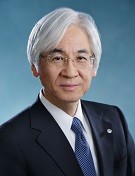About HICARE
Home > About HICARE > Message from the President
Message from the President

President
Kenji Kamiya
Hiroshima International Council for Health Care of the Radiation-exposed (HICARE) was established in April 1991 in order that Hiroshima, a city that suffered the ravages of an atomic bomb for the first time in the world, could contribute to the medical care for the radiation-exposed all over the world and promote international cooperation based on the close partnership with the relevant institutions, making the best use of the experiences that Hiroshima has acquired through the invaluable sacrifices made here in Hiroshima.
Since its establishment, HICARE has implementd a variety of projects, including for the medical care of those exposed to radiation through the Chernobyl Nuclear Accident and the Semipalatinsk Nuclear Tests, cooperation in radiation emergency medicine, training of healthcare personnel for A-bomb survivors in North and South America and South Korea, compiling documents related to the medical care of A-bomb survivors, and holding symposiums.
Also in Japan, HICARE has been engaged in activities including dispatching experts in response to the criticality accident in Tokaimura, Ibaraki Prefecture in 1999 and the Fukushima Daiichi Nuclear Power Plant accident caused by the Great East Japan Earthquake in 2011. Especially since the Fukushima accident, HICARE's constituent organizations have been developing various support activities, utilizing its’ international network in order to make the most of the experience accumulated in Hiroshima, with the aim of reconstruction support after the nuclear power plant accidents that occurred in our own country.
HICARE has been recognized for its activities and received the Public Health Award, one of the most prestigious awards in Japan in the field of public health and hygiene.
In addition, in 2012, in commemoration of the 20th anniversary of the foundation, we entirely revised its medical handboolk, the “Effects of A-Bomb Radiation on the Human Body,” which has been highly appreciated as a reference manual since its first publication in 1992. on the effects of radiation on the health of A-bomb survivors, incorporating the latest knowledge.
Furthermore, in 2014, HICARE was designated as an International Atomic Energy Agency (IAEA) Collaborating Centre in the field of “capacity building in radiation effects and human health,” and has been making new international contributions, such as actively engaging in joint research and human resource development projects, using the international network of the IAEA.
In the 75 years since the atomic bombings, collaborative activities utilizing international cooperation have become essential in the fields of health care, regarding the medical treatment of radiation-exposed people and the health effects of radiation. In this situation, the role of HICARE has become increasingly important.
HICARE will continue to rally Hiroshima’s wisdom to develop human resources and disseminate information in the field of medical care for radiation-exposed people.
We hope that many people, regardless of their nationality and ranging from the general public to medical professionals, researchers, and those from administrative bodies will visit this website to deepen their understanding of HICARE's activities as well as to become better informed about the effects of radiation exposure.
Augst, 2020
HICARE President Kenji Kamiya




